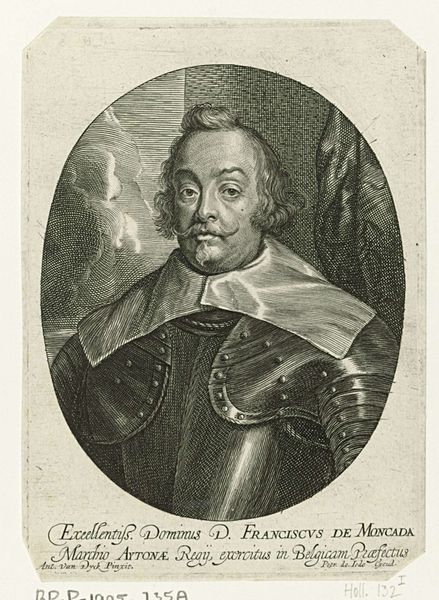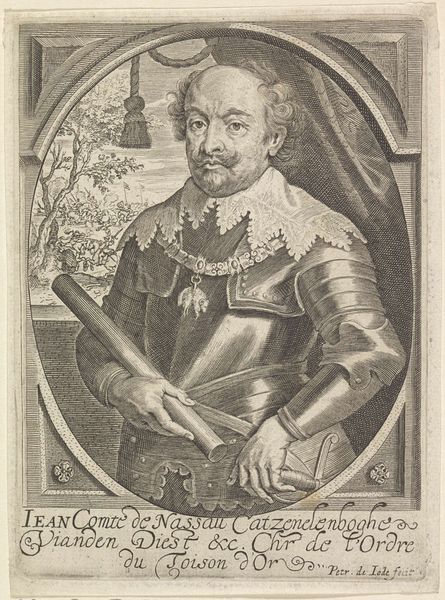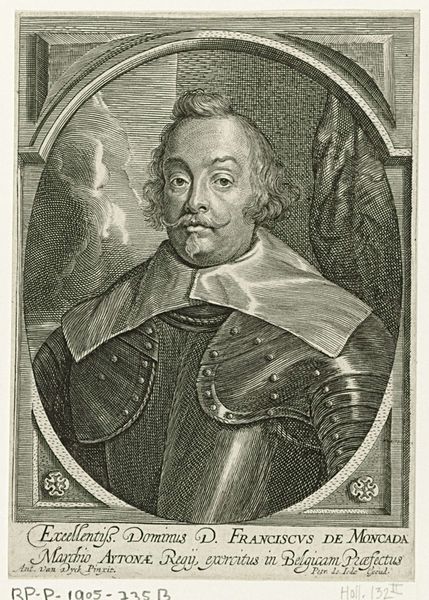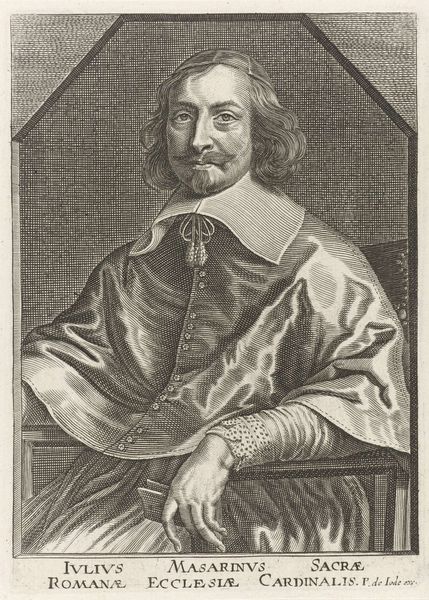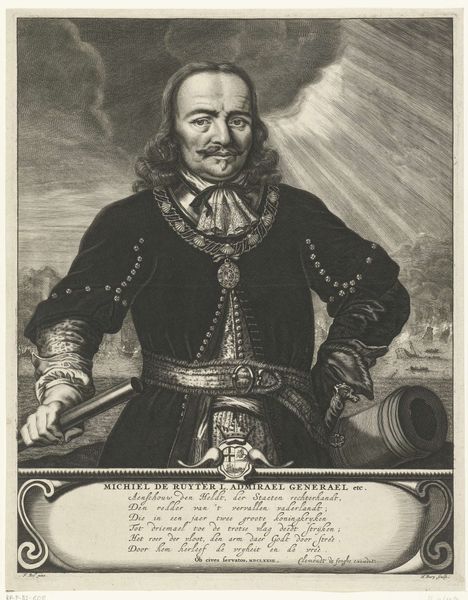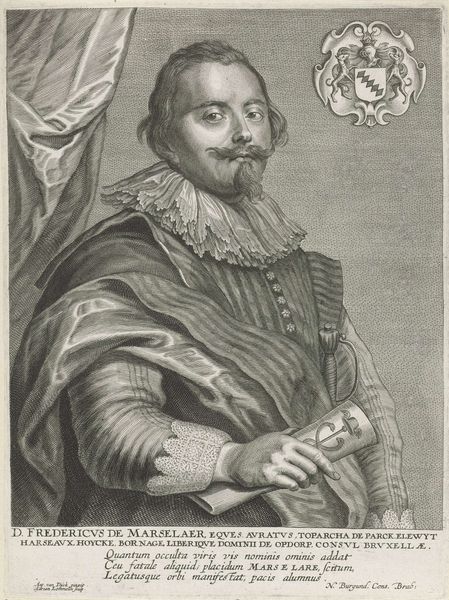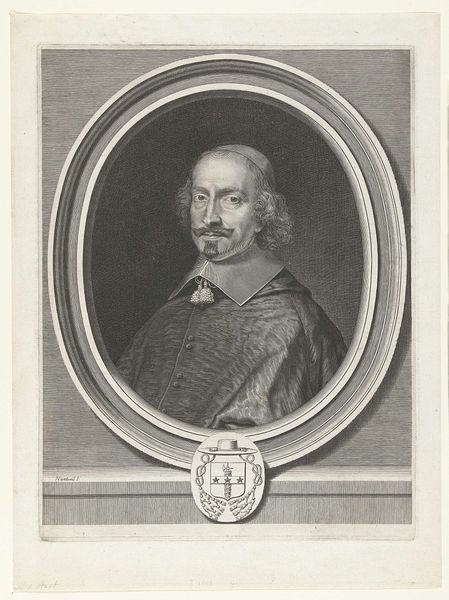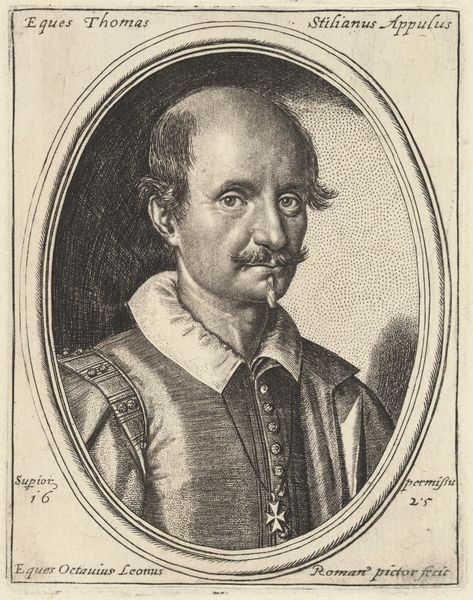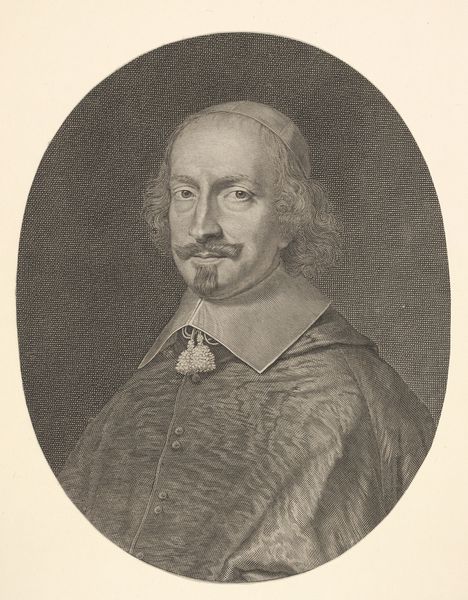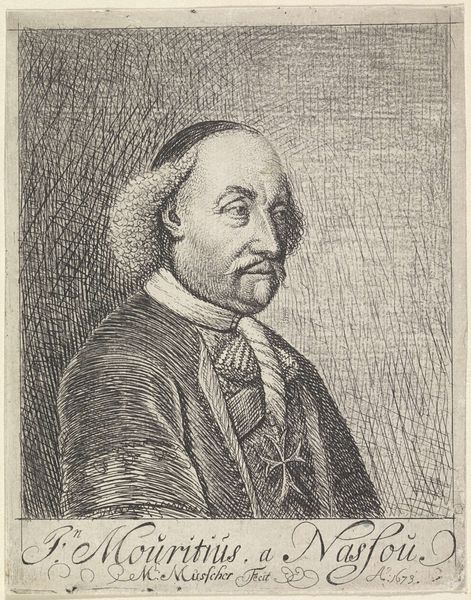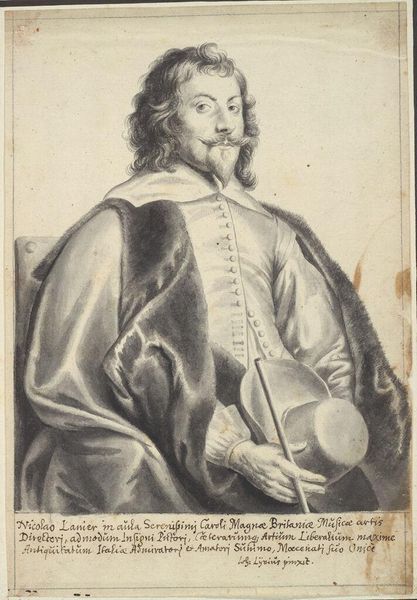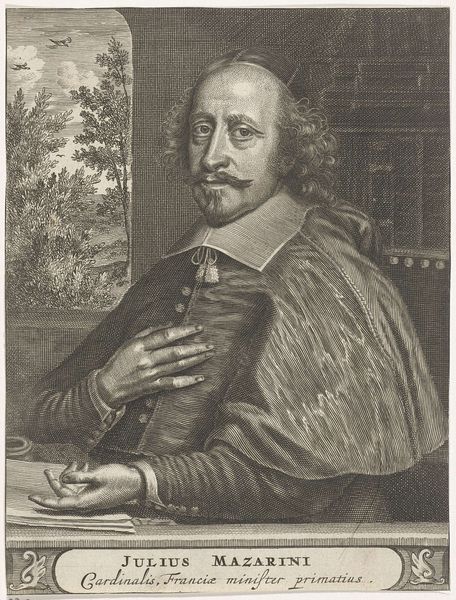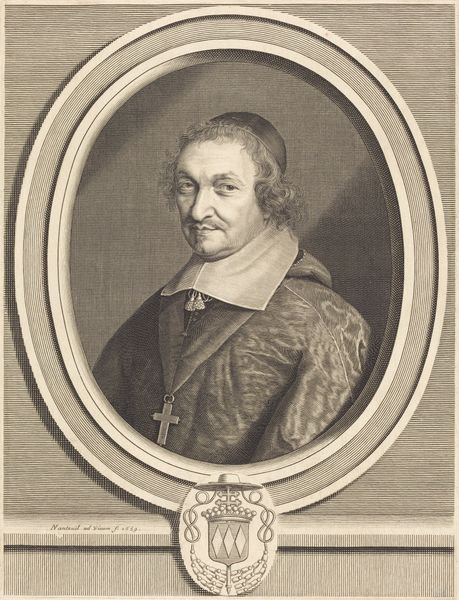
print, engraving
#
portrait
#
baroque
#
dutch-golden-age
# print
#
figuration
#
history-painting
#
engraving
Dimensions: height 200 mm, width 157 mm
Copyright: Rijks Museum: Open Domain
Editor: This engraving, "Portret van Johan Maurits, graaf van Nassau-Siegen," is from around 1663 to 1695 and is currently held at the Rijksmuseum. The commanding presence of the subject strikes me, along with all the intricate details captured within the print. How do you interpret this work and the choices the artist made? Curator: This piece is more than a simple depiction; it's a calculated display of power and cultural identity. Notice the armor and the sash – they speak volumes about Johan Maurits's status as a military leader and nobleman. What does the inscription in his hand suggest to you? Editor: Hmm, perhaps a claim to territory or a document of political importance, related to his Governorship in Dutch Brazil? Curator: Precisely. These symbols are deeply ingrained in the Dutch Golden Age and the rise of mercantile power. The seemingly innocuous clouds in the background also imply an idealized landscape – but also represent an uncertain future. What cultural memory do you think this imagery was designed to invoke? Editor: It reminds me of Dutch ambition during that time. There is an undercurrent of trying to immortalize a historical figure and to establish their legacy, very common with Baroque-era portraiture. Curator: Exactly. This image aimed not only to portray a man but also to build a lasting symbol of power during an age of expansion. Now, thinking about what is remembered and what is forgotten - what continuities might you see here with later political imagery? Editor: I see how the use of symbolic props continues even today. Political figures are still often depicted with particular artifacts that underscore their values or vision of leadership, in many ways similar to this portrait! It is something to be more aware of going forward. Curator: Indeed. Analyzing these symbols grants us deeper insight into not just history, but the carefully constructed narratives that continue to influence us.
Comments
No comments
Be the first to comment and join the conversation on the ultimate creative platform.
